My
List |
Addition Date
|
Target
|
Mission
|
Instrument
|
Size
|

|
2016-04-26 |
|
Spitzer Space Telescope
|
|
3840x2160x3 |
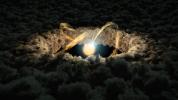
|
-
PIA20645:
-
Protoplanetary Disk (Artist's Concept)
Full Resolution:
TIFF
(13.92 MB)
JPEG
(629.5 kB)
|

|
2014-04-02 |
Helix Nebula
|
Hubble Space Telescope
|
Hubble Space Telescope
|
16000x16000x3 |
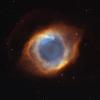
|
-
PIA18164:
-
Iridescent Glory of Nearby Helix Nebula
Full Resolution:
TIFF
(768.1 MB)
JPEG
(27.72 MB)
|

|
2014-03-06 |
|
Spitzer Space Telescope
|
|
3840x2160x3 |
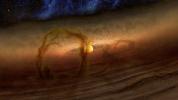
|
-
PIA17849:
-
Loops of Gas and Dust Rise from Planetary Disks (Artist Concept)
Full Resolution:
TIFF
(24.89 MB)
JPEG
(461.2 kB)
|

|
2013-01-30 |
|
Herschel Space Observatory
|
|
4268x2400x3 |

|
-
PIA16683:
-
Weighing Planetary Disks (Artist's Concept)
Full Resolution:
TIFF
(30.75 MB)
JPEG
(358.7 kB)
|

|
2008-11-11 |
|
Spitzer Space Telescope
|
Infrared Spectrograph (IRS)
|
3000x2400x3 |
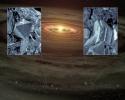
|
-
PIA11417:
-
Quartz-like Crystals Found in Planetary Disks
Full Resolution:
TIFF
(21.6 MB)
JPEG
(607 kB)
|

|
2007-08-29 |
NGC 1333
|
Spitzer Space Telescope
|
|
3200x2400x3 |
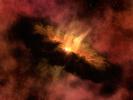
|
-
PIA09967:
-
Water's Early Journey in a Solar System (Artist Concept)
Full Resolution:
TIFF
(23.04 MB)
JPEG
(336.4 kB)
|

|
2007-08-29 |
NGC 1333
|
Spitzer Space Telescope
|
IRAC
|
3000x2400x3 |
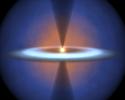
|
-
PIA09966:
-
Steamy Solar System
Full Resolution:
TIFF
(21.6 MB)
JPEG
(167.5 kB)
|

|
2007-04-18 |
Rosette Nebula
|
Spitzer Space Telescope
|
|
3300x2400x3 |
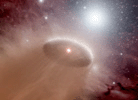
|
-
PIA09266:
-
Highway to the Danger Zone (Artist Concept)

Full Resolution:
TIFF
(23.76 MB)
JPEG
(244.6 kB)
|

|
2007-03-29 |
|
Spitzer Space Telescope
|
IRAC
|
3000x2400x3 |
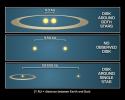
|
-
PIA09227:
-
Where Planets Take up Residence
Full Resolution:
TIFF
(21.6 MB)
JPEG
(348.8 kB)
|

|
2006-12-08 |
|
Spitzer Space Telescope
|
IRAC
|
3000x2141x3 |
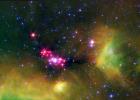
|
-
PIA09072:
-
Seeing Stars in Serpens
Full Resolution:
TIFF
(19.27 MB)
JPEG
(752 kB)
|

|
2006-10-03 |
|
Spitzer Space Telescope
|
MIPS
|
1500x558x3 |

|
-
PIA01319:
-
A Star's Close Encounter
Full Resolution:
TIFF
(839.7 kB)
JPEG
(43.53 kB)
|

|
2006-04-05 |
|
Spitzer Space Telescope
W. M. Keck Observatory
|
IRAC
Keck I Telescope
|
2571x2130x3 |
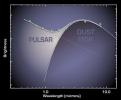
|
-
PIA08041:
-
Circle of Ashes
Full Resolution:
TIFF
(16.45 MB)
JPEG
(212.9 kB)
|

|
2006-04-05 |
|
Spitzer Space Telescope
|
|
3200x2400x3 |
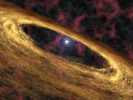
|
-
PIA08040:
-
Stellar Rubble May be Planetary Building Blocks (Artist Concept)

Full Resolution:
TIFF
(23.04 MB)
JPEG
(721.1 kB)
|

|
2005-07-13 |
Cygnus
|
W. M. Keck Observatory
|
Keck I Telescope
|
3000x2400x3 |
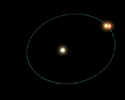
|
-
PIA03521:
-
Circus Family of Stars (Artist's Concept)

Full Resolution:
TIFF
(21.6 MB)
JPEG
(147.3 kB)
|

|
2005-07-01 |
Comet
|
Spitzer Space Telescope
|
|
646x486x3 |
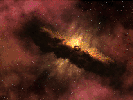
|
-
PIA02107:
-
Genesis of a Comet (Artist's Concept)

Full Resolution:
TIFF
(943.1 kB)
JPEG
(30.67 kB)
|

|
2003-05-28 |
Mars
|
Mars Global Surveyor (MGS)
|
Mars Orbiter Camera (MOC)
|
388x583x3 |

|
-
PIA04529:
-
Earth, Moon, and Jupiter, as seen from Mars
Full Resolution:
TIFF
(102 kB)
JPEG
(8.933 kB)
|

|
2003-05-22 |
Earth
|
Mars Global Surveyor (MGS)
|
Mars Orbiter Camera (MOC)
|
961x961x3 |
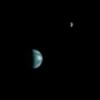
|
-
PIA04531:
-
Earth and Moon as viewed from Mars
Full Resolution:
TIFF
(197.6 kB)
JPEG
(17.52 kB)
|

 Planetary Data System
Planetary Data System





























